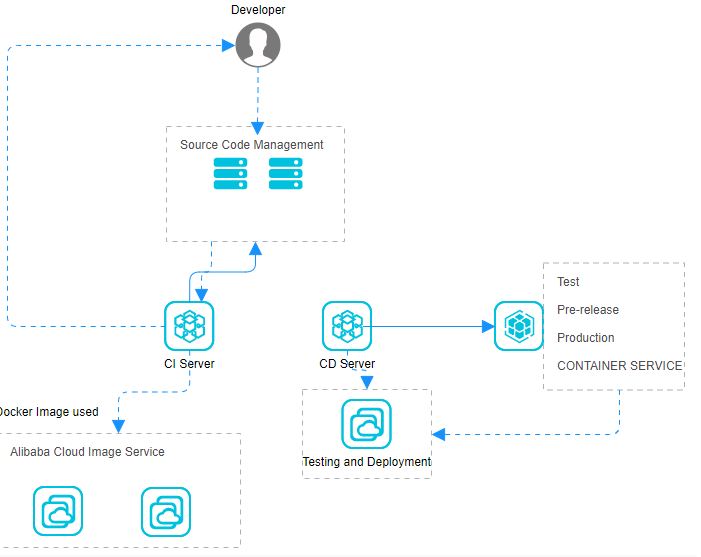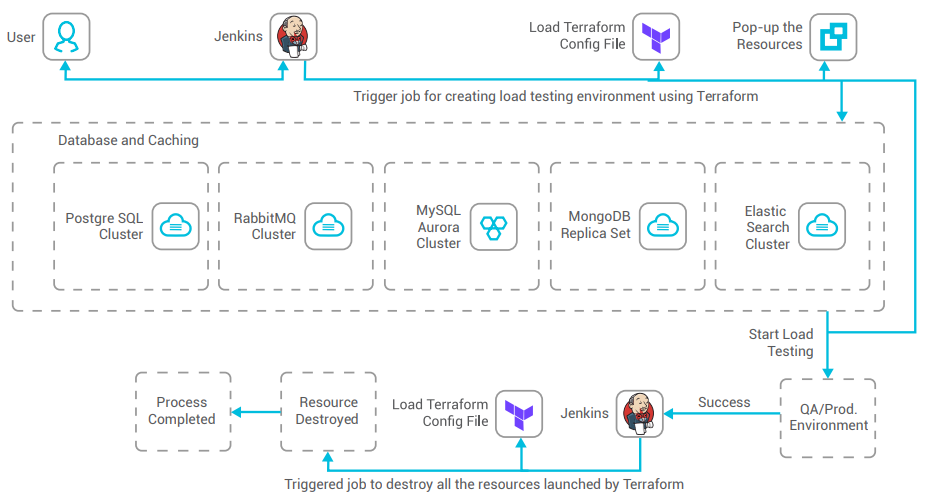By Shantanu Kaushik
DevOps has transformed into a culture. It has grown well and gone through numerous developments or upgrade cycles. DevOps has now evolved into a near-perfect practice. However, like any technical system, it is still upgrading as tools and services from both the development and operations sides are upgrading also.
Alibaba Cloud DevOps solution incorporates the cream layer of DevOps practices. Support for microservices and containers using Kubernetes and Docker has led to a massive increase in demand for Alibaba Cloud DevOps solutions.
Data-centric applications are generally deployed using large infrastructure-based platforms. As these networks are mostly built using a distributed network environment, DevOps must work better with it! A few essential practices have to be followed to accelerate the whole CI-CD practice.
Alibaba Cloud DevOps solutions have made a mark on the industry as they prove to be the answer to most critical situations. After the COVID-19 pandemic, Alibaba Cloud and its services fueled technical innovations to an extent that technology was the only thing unaffected by the global lockdown.
In this article, we are going to discuss the best practices for DevOps to succeed within a distributed environment.
Distributed networking has revolutionized the industry with its non-centralized approach and resource orchestration. While adopting distributed networking solutions for data-centric applications, one has to make sure that the development process is in-tune with your networking environment. If you are using DevOps as a Solution to develop and deploy applications for a distributed networking environment, you need to follow some practices as a rule of thumb.
While using a distributed environment, you will have multiple systems and applications performing different roles. Using Continuous Integration and Delivery (CI CD) to achieve uniformity has to be standard practice. Let’s understand how the Alibaba Cloud container service works.
The Alibaba Cloud Container Service may be used for application publishing and continuous delivery capabilities. It supports microservices architecture and works with both Kubernetes and Docker. Container service can be used to integrate virtualization, security, networking, and storage capabilities in a containerized cluster.
Let’s look at the architectural flow of the container service on Alibaba Cloud:

Another boon to DevOps industry practices came with Container Registry. This product enables you to store and manage images in the entirety of its lifecycle.
With secure image management, the container registry is a simple and effective tool to create and maintain an image registry. This product is fully managed by Alibaba Cloud and is deeply integrated with DevOps tools. It supports automatic image build creation using GitHub, Alibaba Cloud Code, and Bitbucket.
By using containers in a distributed environment, you are simplifying the process of escalating your application from pre-production to production environment.
Using DevOps tools for automation at different stages of the deployment cycle ensures faster delivery. Alibaba Cloud supports many open-source and in-house collaboration tools that work wonders to achieve a time-centric application delivery model.
DevOps outlines the need for accelerated IT service delivery by achieving better collaboration and communication between development and operations teams. Achieving the true meaning of this statement can only be done by using the correct tools at specific stages and automating tasks in a Software Development Lifecycle.
To achieve Continuous Integration, continuous delivery, and continuous testing methodology, you need to enable automation at multiple stages of the SDLC. This needs to be implemented after carefully accessing your application delivery scenario. After that, you need to carefully choose which modules you wish to automate and which tools you want to use.
Alibaba Cloud supports a lot of open-source tools for different operations, such as integration, testing, or delivery. You can easily accelerate the total practice using the correct set of tools.
Implementing DevOps for a faster deployment cycle is a crucial practice to match organizational goals. That is why using microservices is an essential part of the whole SDLC. With microservices, you can control your DevOps practice and easily resolve issues. Alibaba Cloud offers an Infrastructure as Code (IAC) based Terraform service that is an open-source resource orchestration tool. It can be used for multi-platform cloud deployments and is typically used to implement automated Operations & Maintenance (O&M) operations.
Let’s look at how the IAC Terraform architecture works on Alibaba Cloud:

While you are using a Virtual Private Cloud (VPC), every instance is a Virtual Machine (VM). DevOps suggests the testing environment is the key to its success. This has been ascertained by years of deployments and upgrades to the whole DevOps practice. A better testing environment will allow a better total DevOps practice. It is highly recommended to use a virtualization practice by sandboxing the total environment. Let’s discuss how:
When using distributed networking for data-centric applications, it is always advised to create a clone sandbox environment for off-the-track continuous integration and testing. These sandboxes can be configured to mimic identical deployment scenarios as the real-world environment would, but will let you stress-test your application to collect vital operational data. This will enable a more sophisticated deployment cycle that will collect support metrics within the sandbox.
Alternatively, you can take the metrics collected from your sandbox and compare it with the metrics collected after deployment. A sandbox can be configured exactly like the production environment. It can match hardware, operating system, network, software, APIs, and everything else within the mix.
Distributed Networking has been implemented by various technology giants as it overcomes many shortcomings of a centralized computing approach. Computing, data processing, and other modules can be separated and made available to the user depending on what requirement and region they wish to access the information from.
When implementing DevOps practices to build applications for a distributed environment, you need to make sure to quickly develop, test, and deliver the applications. To achieve this, DevOps teams have to build, test, and deploy their applications within the virtual environment first. This will enable the teams to save valuable time and resources.
Continuous deployment or delivery can be achieved through the flexibility of virtualization and by using containers that use the operating system and virtualization technologies to run applications. Virtualization or sandboxing allows updates (continuous integration) to be tested and deployed on multiple servers with enhanced performance, stability, and reliability. Virtualization and containers are the prime movers when it comes to DevOps practices. They are needed to maximize the productivity of an enterprise.
In this article, we will introduce the concept of cloud migration and give an overview of pre-migration considerations. We will also discuss application and database migration.
The views expressed herein are for reference only and don't necessarily represent the official views of Alibaba Cloud.
What to Expect from Alibaba's 2020 11.11 Global Shopping Festival

2,605 posts | 747 followers
FollowAlibaba Clouder - May 18, 2021
Alibaba Clouder - February 9, 2021
Alibaba Developer - December 16, 2021
Alibaba Clouder - November 26, 2020
Alibaba Tech - July 2, 2019
Lee Li - January 11, 2021

2,605 posts | 747 followers
Follow Bastionhost
Bastionhost
A unified, efficient, and secure platform that provides cloud-based O&M, access control, and operation audit.
Learn More Managed Service for Grafana
Managed Service for Grafana
Managed Service for Grafana displays a large amount of data in real time to provide an overview of business and O&M monitoring.
Learn More ACK One
ACK One
Provides a control plane to allow users to manage Kubernetes clusters that run based on different infrastructure resources
Learn More DevOps Solution
DevOps Solution
Accelerate software development and delivery by integrating DevOps with the cloud
Learn MoreMore Posts by Alibaba Clouder